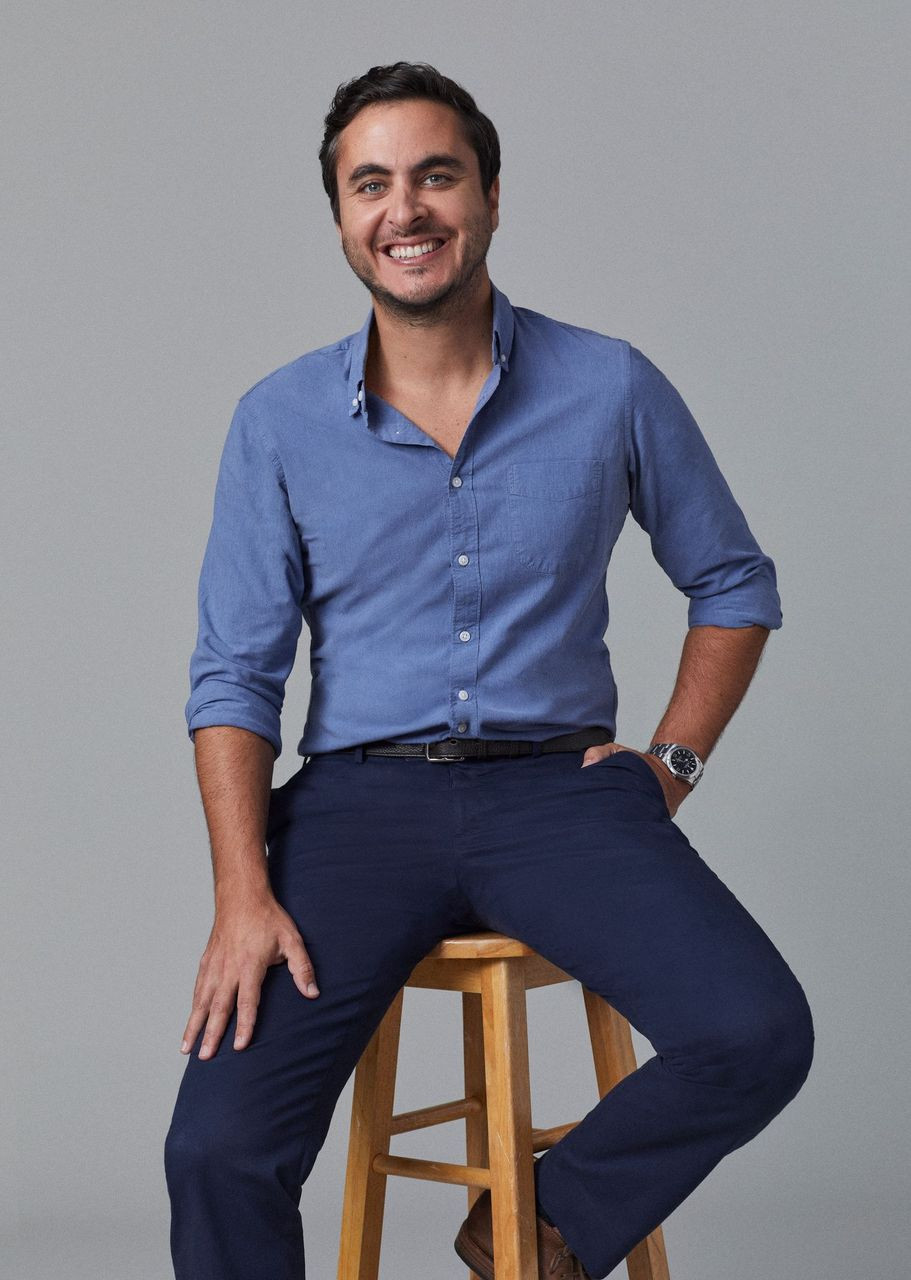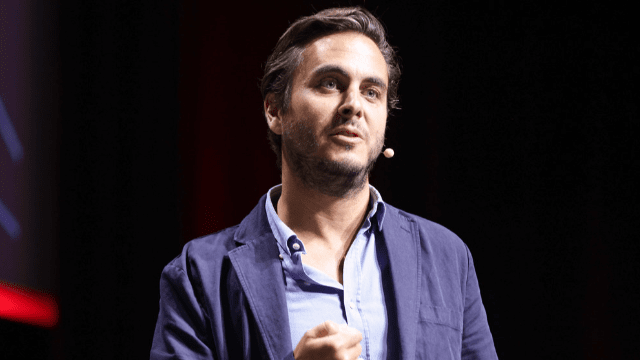His story is that of the classic young European who went off in search of the American dream. Mark Kornfilt, an EPFL graduate in computer science, is a co-founder of Livestream – the first company to offer a direct streaming service via the web. He went on to become president of Vimeo, one of the world’s leading video platform operators. Now back in Switzerland, he spoke with us about his trajectory as an entrepreneur, the future of online content, and what’s in store for him next.
You decided to major in computer science in 2000, at a time when digital technology wasn’t as central to our lives as it is today. Why did you make that choice?
At our new student orientation at EPFL, they told us: “If you picked this major for the money, you’re out of luck!” That gives you an idea of the state of the software industry at the time. Things have changed a lot since then! Those of us who chose this major did so out of passion.
My interest in computers dates back to when I was seven or eight years old. My father had always enjoyed gadgets, and one day he came home with a Commodore 64. I jumped right into taking it apart and putting it back together! A few years later, I spent a summer with a cousin who was a developer for the army. That was the first time I was exposed to software development – and I was blown away. Then, when I was 13, I started posting ads in the Geneva newspaper offering my computer repair services. I was a geek, so enrolling in a computer science program at EPFL quickly became obvious to me.
You began your career in New York in 2005, working for LimeWire to help develop its peer-to-peer file-sharing system. Why did you decide to go to the US and what was the atmosphere like there, right after the dot-com bubble burst?
I’d read a book that really influenced me: Hackers & Painters by Paul Graham, a software engineer and entrepreneur. The book came out in 2004, and Graham was one of the first to explain what it meant to start a business in the tech industry: what the first steps were, how to choose your business partners, how to raise money, and so on. He drew a parallel between creating a work of art and creating a new software business. Even today, software engineering isn’t seen as a creative endeavor, even though we often start with a blank page and end up with a tangible product adopted by users around the world.
I went to the US because I wanted to see what the tech industry was like there. After completing my Master’s project in New York, I started working for LimeWire in September 2005. The atmosphere was completely different from what I had seen in Switzerland. The company’s offices were in a loft in Tribeca, with a Zen-inspired interior design and plants everywhere. All the other employees were graduates of big-league US universities like MIT, Yale and Stanford. The business culture in the US was a huge change from what I was used to, and it took some adapting on my part. There, people demonstrate a lot of self-confidence, which is different from the more understated, reserved attitude people have in Switzerland. I’ve stayed close to my Swiss roots, although I did borrow some elements of the US approach that helped me quite a bit as an entrepreneur.
“Our initial idea was to create a website where individual users could have their own television channels. We began working on it in the evenings after work, well into the night, carried by the adrenaline rush that kept us coding!”
How did the idea for Livestream come about?
I met Max Haot, another one of our cofounders, through a mutual friend. At the time I was already thinking about leaving LimeWire and starting my own business. Max invited me over one evening and showed me a prototype he’d made: he had one computer in his living room and one in his bedroom, and was broadcasting live from one room to the other!
Back then, live broadcasting was done only on television, not over the internet. Max’s idea struck me as revolutionary. Our initial idea was to create a website where individual users could have their own television channels. We began working on it in the evenings after work, well into the night, carried by the adrenaline rush that kept us coding! We also saw that we got along well and were ready to take the leap and devote ourselves full-time to starting a business, which we did in early 2007.
YouTube and Dailymotion were already well established when you founded Livestream, but they didn’t offer live broadcasting.
Nobody did at the time because it was technically very complicated. We knew YouTube would introduce a streaming service eventually – but they hadn’t yet. The trick for us was to be the first on the market and get the first-mover advantage.
Looking back over your 16 years at Livestream, were there any broadcasts that really stood out for you?
There was our first one, of course – the launch of the very first iPhone in 2007, which we streamed directly from the Apple Store in Soho. It was the first time we saw the concrete results of our work. The event drew a huge amount of traffic, confirming that our idea had potential and there was a market out there. The following year, we streamed Barack Obama’s presidential campaign rallies.
I was also very impacted by the videos that users streamed during the Arab Spring, starting in late 2010. Livestream was the only platform they had to broadcast some of the images. For instance, in Benghazi, Libya, all journalists from the mainstream media outlets had been pulled out of the city. A man living in Benghazi used Livestream to broadcast what was taking place and document the civil war. He was later assassinated. That was one of the most poignant events we were part of.
There were other noteworthy broadcasts, too, like the European Space Agency’s Rosetta mission, where a module landed on a comet for the first time. There again, we were the only ones to broadcast the event.

“As a business evolves, a higher degree of specialization is required, and some of the early employees find it hard to adapt, sometimes because they’re not able to acquire the skills, but more often because they just don’t like the new job.”
Over the years, the startup you created with a few friends grew into an established company with dozens of employees. What were the biggest challenges you faced during this expansion?
The first challenge related to our business model. We initially wanted to develop a B2C platform that was open to everyone. We were aiming for scale – we wanted to acquire as many users and viewers as possible. And we planned to make money through advertising, like YouTube. At any time of day, we had thousands of people streaming content and tens or even hundreds of thousands of people watching it.
The 2008 financial crisis meant we had to step up our monetization efforts, so we put a paywall on part of our service. But as soon as monetization entered the picture, our revenue became the only indicator that investors looked at, and they wanted to see accelerating growth year after year. We soon realized that our service was better suited to businesses and switched to a B2B model. That required changing a lot of things about our company. We had to rethink our business processes, build a sales force, adjust our marketing strategy and even rework our platform. In the end, we managed to navigate the pivot successfully and turn a profit.
Another big challenge was getting funding. We prioritized business angels over venture capitalists so that we could keep more control over our company. But that also meant we had less operational support. And sometimes, the learning curve was really steep.
Finally, entrepreneurs talk a lot about the importance of surrounding yourself with the right people. And that’s right – that can make or break a company. But what you don’t hear much about is how to manage the growth of your very first employees. As a business evolves, a higher degree of specialization is required, and some of the early employees find it hard to adapt, sometimes because they’re not able to acquire the skills, but more often because they just don’t like the new job. You need to have the hard conversation about parting ways, and even though the outcome is almost always better for both sides, they can be difficult to initiate – particularly for someone like me, who tends to be loyal by nature.
You sold Livestream to Vimeo in 2017. Did you see that as a crowning achievement or just another step along the way?
It made a lot of sense to merge the two companies. We were fairly similar, yet complementary in terms of our service and our sales strategy. One important consideration for us was continuity; we knew we could reach more users, have more impact, and that our employees could grow and thrive in the new environment. My goal was to support the Livestream integration and ensure everything went smoothly, stay 12–18 months and then move on to start something new. But I ended up staying with Vimeo for over five years and serving as its president.
Today, Vimeo could be seen as either the leading video-sharing platform for professionals, or a competitor that’s given up trying to match YouTube. What’s your view?
Vimeo’s goal may initially have been to rival YouTube, but that was no longer the case when I got there. At that point the company was 12 years old and its revenue growth and innovation had been slowing for a while. A new CEO had just been appointed, and it was the beginning of a new strategy. Vimeo turned out to be one of the winners of the pandemic; consumption of online video content soared during the lockdown. But like a lot of tech companies whose revenue boomed during those two years, business stagnated starting in 2022, and that can indeed affect someone’s perception of the firm.
That said, we succeeded in turning the company into a leading video services provider for corporates. Our top line grew from $100 million in 2017 to over $400 million when I left in 2023. I see it as a success.
“Content platforms have become the megaphones of society so they have a tremendous responsibility in moderating content. But they also need better support from lawmakers.”
You’ve worked for LimeWire – a peer-to-peer system with few content controls – and for Vimeo, as the president of a company with much stricter controls. To what extent do you feel such platforms should be held accountable for the content on them?
The concept of content moderation has evolved considerably in recent years. At first, platforms simply responded to complaints made by users. But now, they’re much more proactive. This shift came about largely because of advancements in AI and image and sound recognition, for example. There’s no way humans could manually check the thousands of videos that get posted every day. With new technology, platforms can be much more effective at moderating what’s displayed on them.
Some content is clearly illegal, but a lot of it lies in a grey area where it’s hard to know for sure whether it should be removed. One example is content associated with disinformation. There’s a regulatory gap in this area, and it shouldn’t be up to platform operators to decide what’s legal or illegal. Content platforms have become the megaphones of society so they have a tremendous responsibility in moderating content. But they also need better support from lawmakers.
You mentioned that AI has been very useful for content moderation. What other effects will AI have on online video content in the coming years?
AI will have a huge impact. For instance, generative AI will throw up formidable challenges in the area of image manipulation. As internet users, we’re used to filtering the articles we read online, but that filter is much weaker when we watch videos. Going forward, it’ll be increasingly harder to determine which videos are real and which are fake. That will undoubtedly become a major issue for society.
AI can also assist content creators, helping them to work with colors, improve image quality and enhance sound synchronization. The technology could soon free them of many simple, repetitive tasks.
You left Vimeo in early 2023 and are now back in Switzerland. What’s next for you?
Moving back to Switzerland was a personal choice I made with my wife and three children, and we’re very happy.
Right now, I’m working on starting a new business. I’ve been wanting to go back to building for a while. I had a taste of it when I opened Livestream’s London office in 2011. There, I had to build everything from scratch again – hire staff, acquire customers, and even get back into coding. I loved it!
The new venture is a digital platform that aims to transform commodities trading, starting with paper and pulp. It’ll make it easier for buyers to get into direct contact with suppliers. The idea came from my own family experience – my father has a trading business in the industry, and I saw how offline and traditional the sales and marketing of products still are. There’s a significant opportunity to make these markets more efficient. I’ve already completed a pre-seed funding round and put together a five-person team. I’m really excited about this fresh start.
More broadly, now that I’m back in Switzerland I hope to contribute to the country’s innovation ecosystem. I’m mentoring a startup called Unki, founded by two EPFL students, that aims to revolutionize travel planning. I also joined Ace Ventures, a venture-capital firm that just created a fund specifically for Swiss startups. And I try to help out with other local startup-support programs – both at EPFL, such as Blaze, and elsewhere, like the Genilem startup accelerator.
You recently returned to the EPFL campus for our welcome day. What struck you the most about how the School has changed since you left?
A lot of memories came flooding back as I walked around the campus and went into buildings like the Coupole. Two things that haven’t changed are EPFL’s high standards and research excellence. But other things have: the new buildings, a much more animated campus life - EPFL has a clear ambition to continue to be one of the best schools in the world.
What advice would you give students wanting to start their own business after they graduate?
Don’t be afraid of failure – you’ve got nothing to lose! In the first few years after you graduate, when you’re 20–30 years old, you often have very few things holding you down. Make the most of that time by taking risks. And especially, never stop learning. There’s no better experience in terms of the depth and breadth of the skills you acquire than starting a business. And the conditions in Switzerland for doing that are amazing. Sometimes you’ve got to push yourself out of your comfort zone.
Another piece of advice specifically for those wanting to become entrepreneurs – think about how you intend to penetrate your market right from the get-go. Engineers who map out a business plan often focus on the features of their product and overlook the market-facing aspects. And lastly, I’d advise young entrepreneurs to be patient. It’s a fallacy to think you can create a company and then sell it six months later – be prepared for a marathon.
Bio
- 1982 Born in Turkey
- 2005 Graduates from EPFL with a Master’s degree in computer science
- 2007 Co-founded Livestream in New York
- 2017 Sells Livestream to Vimeo
- 2018 Appointed CPO & CTO of Vimeo
- 2021 Appointed President of Vimeo
- 2023 Returns to Switzerland

Comments0
Please log in to see or add a comment
Suggested Articles



